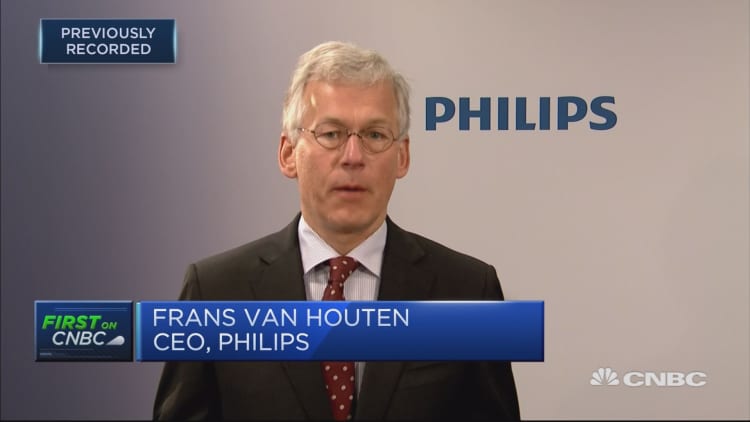
Dutch health technology company Philips' first-quarter results beat expectations on Monday, as customers in China and the United States increased their demand for its high-end hospital equipment.
Core profit in the first three months of the year rose 15 percent to 344 million euros ($422.1 million), Philips said, on a comparable sales growth of 5 percent and a 10 percent increase in new orders.
"While there is more work to be done, 2018 started well," Chief Executive Frans van Houten said in a statement, reaffirming the company's target of a 4-6 percent sales growth for the year.
Analysts in a Reuters poll predicted adjusted earnings before interest, taxes and amortisation (EBITA) for the first quarter of 332 million euros, on 4.3 percent higher sales.
Since the separation of its lighting division in 2016, Philips focuses on medical devices and healthcare products ranging from medical scanners to toothbrushes.
Growth was strongest in the diagnosis and treatment division, as strong demand for ultrasound machines, medical scanners and other hospital equipment in China and the United States led to a 9 percent increase in sales.
The connected care and informatics business, which includes patient monitoring systems and software used by hospitals to gather and analyse data, was less thriving, as comparable sales were flat. Sales of consumer products rose 4 percent.

